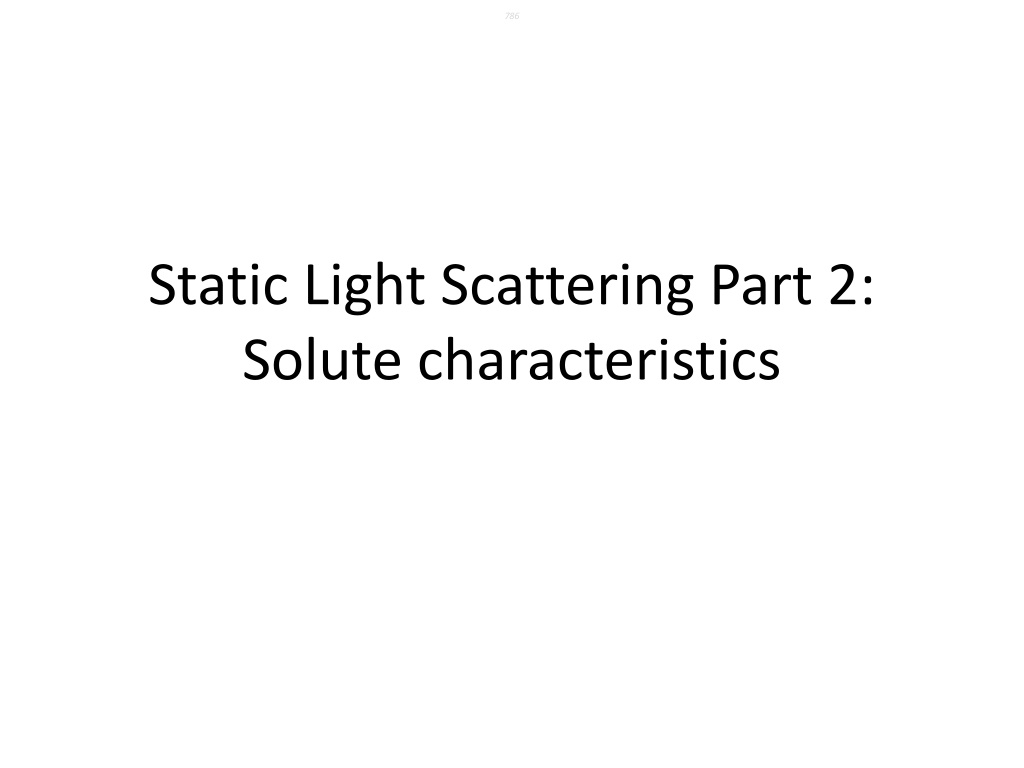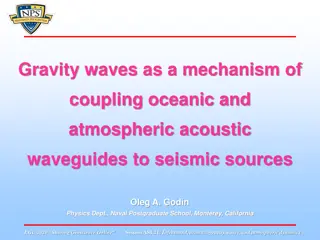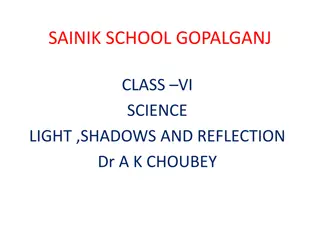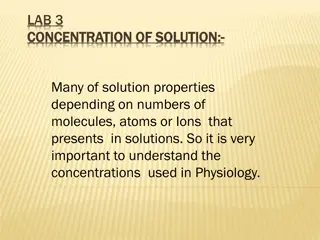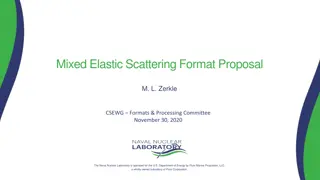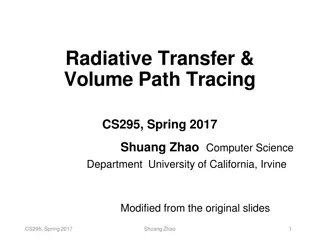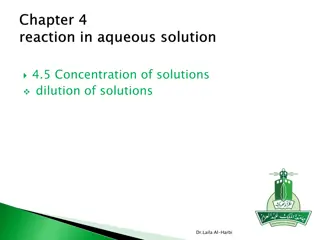Light Scattering Part 2: Solute Characteristics and Applications
Light scattering can provide valuable insights into solute characteristics such as molecular weight, radius of gyration, and second virial coefficient. By analyzing scattering data, information about individual particles and their arrangement in solution can be obtained. Techniques like Zimm or Guinier plots help in interpreting the data effectively for various applications. Additionally, the second virial coefficient is related to interparticle potential and deviations from the ideal gas law, offering a deeper understanding of molecular interactions in solution.
Download Presentation

Please find below an Image/Link to download the presentation.
The content on the website is provided AS IS for your information and personal use only. It may not be sold, licensed, or shared on other websites without obtaining consent from the author. Download presentation by click this link. If you encounter any issues during the download, it is possible that the publisher has removed the file from their server.
E N D
Presentation Transcript
786 Static Light Scattering Part 2: Solute characteristics
What can light scattering measure? For a solute in solution, light scattering can determine: Molecular Weight, M Radius of gyration, Rg Second virial coefficient, A2 A typical application is the determination of the weight average molecular weight M of a macromolecule... the radius of gyration Rg or the form and structure factor. By measuring the scattering intensity at various concentrations, the second virial coefficient A2, can be calculated. Special analysis techniques such as the Zimm or Guinier Plot can be used to obtain results from the measured data. lsinstruments.ch
Background toluene and solvent also scatter light due to density fluctuations
What does I(q) tell us? I P(q)S(q) Form factor P(q) Information about individual particles Structure factor S(q) Information about particle packing Dependent on pair-correlation function Both individual solute molecules/particles and their arrangement in solution contribute to I
Structure Factor S(q) Pair correlation function depends on interparticle interaction U U(R) Umax r
Second virial coefficient Also related to interparticle potential U(R) From thermodynamics: Deviation from ideal gas law based on interaction between 2 particles
Pair correlation g(r) and Structure factor S(q) S(q) g(r)
Pair correlation g(r) and Structure factor S(q) S(q) g(r)
Pair correlation g(r) and Structure factor S(q) S(q) g(r)
Understanding SLS data SLS simultaneously measures I, Kc/R & RH RH is hydrodynamic radius, same as from DLS c is concentration of solute K is a material constant; n = refractive index Kc/Ris called the Rayleigh Ratio, where R is the excess scattering from the solute alone
Rayleigh Ratio The instrument measures this quantity as a function of angle It can be derived that: From form factor c (1+2B2c) From structure factor Where M = molecular weight, B2 = second virial coefficient
Zimm Plot Simplifications: c (1+2B2c) when q 0 this becomes linear! c (1+2B2c) M comes form intercept and B2 from slope
Zimm Plot Measure Kc/R for multiple concentrations at multiple angles Plot tool extrapolates q 0 and c 0 Traces represent different c s Kc/R What if you don t know K and/or c very precisely?
Kc/R q2+cw lsinstruments.ch
Zimm Plot c Extrapolations: c 0 c (1+2B2c) q 0 Kc/R Intercept = 1/M M = weight-averaged molecular weight q2+cw
Note: Form Factor P Geometrical Consideration: integral over the particle/molecule volume considering position of each point within the particle/molecule Also equal to Which is convenient when q and R are known (typically use R from measurement at 90 degrees)
Form Factor P Guinier Approximation: Initial slope gives radius of gyration Don t need to specify c or dn/dc!
Radius of gyration & shape factor Radius of gyration = mass distribution about the center of mass P = Rg / RH Shape factor for Sphere = 0.67 Ring = 1
Lab Tasks SLS measurement on polymer standard SLS on BSA protein (?) Use Plot & Fit software to assist with Zimm plots and extraction of parameters thank you Sharon!
